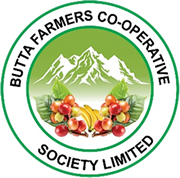Manage the Black Coffee Twig Borer with these easy steps
WE buy all types of coffee
Get in touch with us now
+256-704-614531
The Black Coffee Twig Borer (BCTB) attacks crop-bearing branches of mainly Robusta trees causing them to dry. A farmer can lose up to 50% of the coffee yield if they do not manage BCTB on the farm.
The resultant damage from the beetle is higher during the dry season, especially in coffee trees under shade trees, closely planted coffee trees or inadequately pruned or de-suckered coffee.
Damage to coffee
Only female beetles cause damage to the plants by boring into the tissue of the host. They bore through the xylem into the twig pitch where they chew along the axis of the twig to make a common brood chamber for the eggs. The males live up to 6 days and are flightless while the females live up to 58 days.
The entire life cycle, from egg to mature adult, takes 29 days. On the 29th day, the new females exit the parental galleries to establish new ones. Each female hatches between 10 and 30 eggs. The larvae and adults of the borer get food from the symbiosis developed with the ambrosia fungus.
How to Control the Spread of BCTB
Regularly inspect the coffee field to check for any infestation. As soon as the pest is sighted, cut, chop and burn the affected plant parts. Farmers should avoid using musizi and musambya as shade trees. These are alternate host trees of the BCTB.
It is important that farmers use pest-free planting materials from UCDA-certified coffee nurseries only.
The beetle trap developed by the National Coffee Research Institute (NaCORI) is highly effective in fighting the Black Co ffee Twig Borer. The trap is composed of a transparent plastic bottle, a smaller pharmaceutical bottle, ethanol and a wire or string.
The plastic bottle has two windows on opposite sides. It holds water which drowns and kills the beetle. The smaller bottle, with ethanol in it, is tied with a string and placed in the plastic bottle. The ethanol scent attracts the insect. Once inside the plastic bottle they are trapped by the water in it.
Community approach required
The pests can fly over a very long distance so it will not be helpful if one farmer uses the BCTB traps and others do not. The entire community must take up the technology.
Controlling BCTB
Cut, chop and burn affected plant parts.
Avoid using shade trees such as musizi and musambya. These are alternate host trees for the BCTB.
Use pest-free planting materials from certified coffee nurseries.
Inspect your field regularly to identify any infestation.
